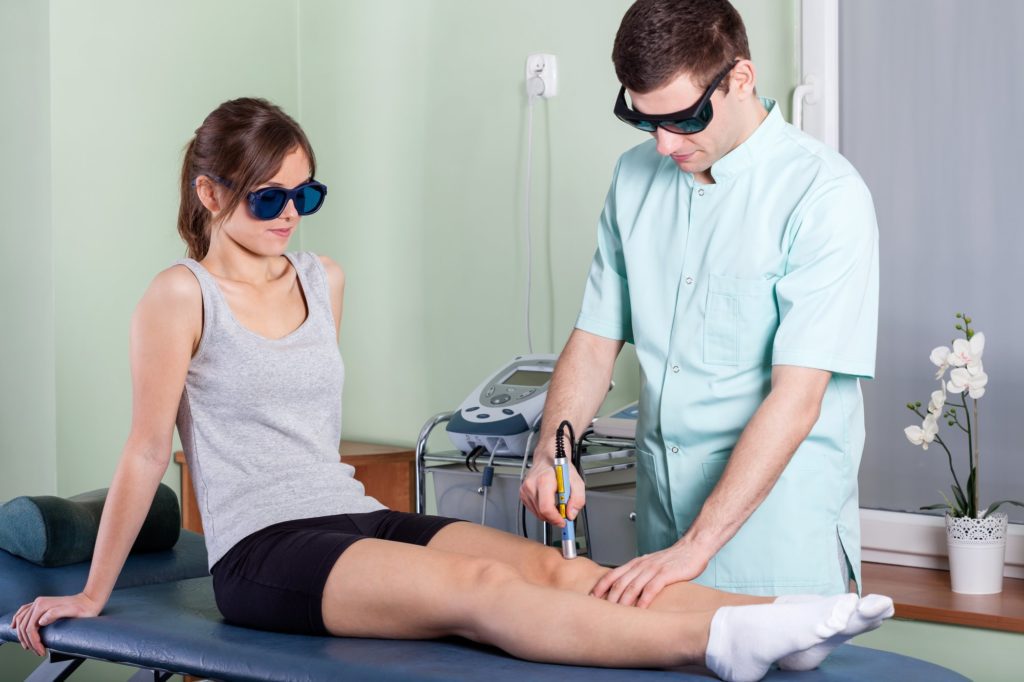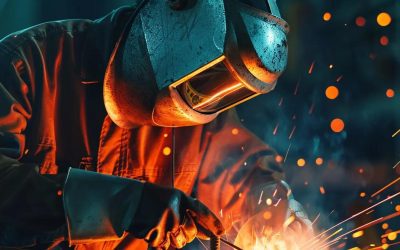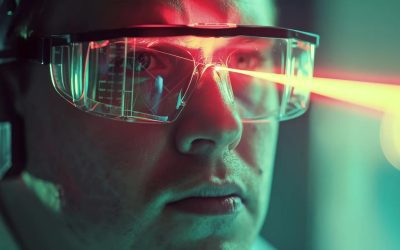What You Need to Know About Healthcare Laser Safety
What You Need to Know About Healthcare Laser Safety
Whether you are a doctor, nurse practitioner, RN or lab technician, you will inevitably be around or even using lasers at your workplace. Health Care Laser Systems (HCLS) are frequently used as medical devices in hospitals, surgery centers, dental offices, veterinarian offices, salons, and spas. The HCLS apparatus includes the following components:
- Laser output delivery system
- Laser power supply, controls, and calibration features
- Laser housing/enclosure, interlock, barrier
- Coolant liquids or gasses
Laser Safety Certification for healthcare professionals covers the essential basics of:
- Hazard evaluation from laser radiation
- Hospital & operating room specific challenges
- Mobile laser system location variations
HCLS manufacturers are required to provide classifications of the laser system. If the laser system has been modified for a custom application, the system must be reclassified by the Healthcare Laser Safety Officer (LSO). The basics of hazard classification of a modified laser system are:
Determine the original hazard classification from the manufacturer.
Note that the classification level for retinal hazard region in the visible and near-IR wavelength range (400-1400 nm) is different from the cornea/skin hazard region in the UV and far-IR (180-399 nm and 1401nm to1000 μm).
Operate the laser system in accordance with the recommended control measures for that specific laser hazard classification.
Note that most surgical lasers are Class 4, which pose hazards to skin and eye damage, as well as fire hazards and severe electrical hazards. Take extreme care around Class 4 Lasers.\
Measure the output of the modified laser system
Note that these measurements must be made in accordance with ANSI Research & Development (R&D) metrology standards.
Who Regulates HCLS?
Medical device lasers are regulated by the Center for Devices and Radiological Health of the FDA and are subject to state and local requirements, such as licensing, registration and training. Below are some helpful links.
Use of HCLS outside of hospitals is common, especially in the case of private practice medical offices, veterinarian offices, dental offices, salons, and spas. The same level of care which is taken in hospital settings must be taken in these non-hospital environments. The user is responsible for knowing how to safely operate the HCLS in compliance with laser safety training implemented by the LSO, as well as application specific instructions provided by the manufacturer. Failure to fully understand the importance of safe HCLS operation can result in costly OSHA penalties, fire, injury or even death. The designated LSO must follow all federal and state regulations, must attend to the laser control area and ensure that the proper warning labels or light are in place while the system is in use, must wear the required personal protective equipment during setup and use, must ensure that the patient is appropriately protected from laser radiation during the procedure, and must ensure that any observers are also trained in laser safety and properly protected during the procedure. In a non-hospital environment, the user assumes all responsibilities of the LSO, including supervision of the maintenance and safe operation of the HCLS.
All medical staff must be provided with on-site hands-on training. This training must ensure that HCLS operators have sufficient knowledge and experience to safely operate these systems. That is why a Healthcare Laser Safety program is so important.
Healthcare Laser Safety Programs
The HCLS is calibrated by the manufacturer but according to OSHA, must be checked prior to each procedure and during extended procedures. Portable ventilation should be used for smoke plume removal during laser surgery. Windows must be covered or blacked out in laser surgical areas. Your laser system should have a preventive maintenance schedule according to the manufacturer’s instructions. All personnel in the operating room during laser surgery must wear proper protective gear such as goggles for the specific wavelength of the laser output.
The LSO must complete a formal healthcare laser safety course, a healthcare LSO course, certification as a healthcare LSO, and have previous laser operational work experience. The following personnel also require training:
- Supervising doctor or nurse practitioner
- Laser operators
- Technical support staff
- Nurses and allied health care professionals
Is Protective Equipment Necessary for People and Laser Equipment?
Laser protective equipment and personal protection equipment (LPE/PPE) are for the benefit of both laser users and patients. Eye safety for healthcare personnel and patients is provided by goggles, face shield, barriers, curtains, or absorptive windows. Skin protection is provided by gloves, or gowns. They must be worn with Class 3B and Class 4 lasers. Laser safety goggles must be able to fit over normal vision corrective glasses. They must also have a suitable optical density for attenuation within a specific wavelength range. They should be selected by the LSO with the recommendation of the manufacturer. Protective eyeware must be provided by the health care facility administration or private practice owner.
LPE must protect against diffuse scattered beams, specular reflection, and direct incidence. The skin protective equipment must be selected based on its flammability limit. The LSO must maintain the LPE & PPE and dispose of damaged items.
Different procedures require different laser equipment protection.
- Fiber optic procedures – must be worn by everyone within the NHZ whenever the fiber end cap is open, or when there is risk that the fiber could break. Most fiber delivery systems have a thick protective cladding to prevent breakage, but bare fibers pose a significant breakage risk.
- Endoscopic procedures – the delivery system may be deemed safe, eliminating the requirement of LPE during the procedure. Such procedures may be carried out with only procedural safety control measures.
- Microscopes, ophthalmoscopes, and endoscopes – protection must be worn by personnel using these viewing aids.
Laser protection equipment should be inspected for its labeled optical density (transmission attenuation factor), wavelength range, condition and cleanliness. Condition degradation includes pitting, cracking, discoloration, mechanical breakdown, light leakage, or dark spots.
Protective barriers should be applied to windows and doorways. Curtains or window blackout film should surround the laser treatment control area (LTCA). The material of the barriers or curtains should be sufficient to attenuate the transmitted radiation to a level below the MPE at the specified wavelength. The material should also have a suitable flammability rating for direct incidence.
Laser Warning Signs
Do you have proper signage for your laser? The class of your laser will determine what must be included in the sign. Phrases that give warnings appropriate for the class of your laser are necessary for both personnel and patients. To be compliant with OSHA, warning signs should indicate the laser class, hazard classification, eye protection and type of laser. You should consult your laser owner’s manual for specific requirements.
Our training programs provide understanding of relevant policies and procedures designed to ensure safe use of laser systems in a healthcare environment. Training should be updated and given in the form of refresher courses in a timeframe determined by the LSO, but no less than every 5 years.
For Class 3B & Class 4 lasers, all operators must be provided with on-site hands-on training for proper laser use. This training must ensure that healthcare personnel have sufficient knowledge and experience to safely operate these systems.
Sign up today with LaserSafetyCertification.com and ensure your workplace is safe – and OSHA compliant. If your facility has an accident or injury related using a laser, OSHA inspectors will demand safety training records. With LaserSafetyCertification.com you have everything required to show training and compliance.
If you are looking to create your own in-house safety program, our Healthcare Laser Safety Kit is the perfect solution. Bundle it with an LSO course to save money!
Healthcare Laser Safety
The number of healthcare laser devices has grown significantly in the last decade due to advances in surgical and medical procedures. With this growth comes the need for vigilance in the clinic, lab, hospital, or surgery center to ensure patient and employee safety.
Healthcare Laser Medical Devices
There are more than a dozen Class 3B and 4 laser systems found in everyday medical use. Class 3B systems are typically not fire threats but can cause significant optical harm if viewed directly or by reflection. Class 4 laser systems, primarily used in surgery specialties – ophthalmology, urology, dermatology, otolaryngology, and cardiology – carry extra risk because it is the most hazardous class of laser. This is why a healthcare laser safety program is of paramount importance.
The Ten Steps to Healthcare Laser Safety
- Appoint a Healthcare Laser Safety Officer (LSO) and define the role and responsibilities. This person should have the authority and responsibility to implement, monitor and enforce the program. The person chosen is typically a physician, operating room nurse or surgical technician who is experienced in operating, maintaining or calibrating laser systems. An LSO is required by many states, and you should consult the appropriate local entity.
- Train the LSO properly in a course with a trusted organization, such as Laser Safety Certification.
- Draft a healthcare laser safety policy statement and establish the details of your program. If you need materials to establish your in-house safety program, you should consider LSC’s Healthcare Laser Safety Officer Kit Bundle that includes both a certification course for the Healthcare LSO and a kit to train employees at your facility.
- Conduct an inventory of all Class 3B and Class 4 lasers and maintain a record of each device’s location.
- Record which lasers are current on their preventive maintenance and which lasers are compliant with the FDA’s Center for Devices and Radiological Health (CDRH) federal requirements.
- Complete a laser hazard assessment for each operating room following ANSI Z136.3.
- Examine, document and control non-beam hazards, including laser-generated air contaminants caused by laser plume.
- Write standard operating procedures for all laser equipment in your inventory and implement measures for the control of beam and non-beam hazards using the template included in our Healthcare LSO Kit.
- Authorize laser personnel and employee laser safety training appropriate for the degree of hazard.
- Audit the program annually to ensure it is still effective and controls and SOPs for the hazard are working to keep people safe.
Conclusion
Organizations executing a healthcare laser safety program will want to stay up to date with the latest industry trends and ensure compliance with the ANSI Z136.3-2011 standards.
For more on implementing an OSHA and ANSI compliant Healthcare Laser Safety program, review the information at https://www.lasersafetycertification.com/healthcare-kit/.




